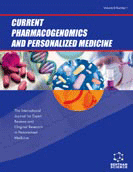Abstract
The generation of genetically altered mice for research is invaluable for investigations into the underlying mechanisms of common complex diseases such as cancer as well as for therapeutic studies. The correct identification of the genotype of each mouse is therefore essential. Genotyping is routinely performed by using blood, tail or ear tissue; however, this can cause pain or discomfort to the animal and nor is amenable to scale up for high-throughput sampling and analyses. Genotyping from saliva, hair and rectal cells is less invasive, but still requires the restraint of the animal. In contrast, collection of stool samples for DNA isolation is non-invasive as well as repeatable and time efficient, with recent studies showing it to be as accurate as the alternative methods. Fecal DNA genotyping therefore provides an attractive technique for non-invasive genotyping. This feature article examines and synthesizes the recent advances in fecal genotyping with a view to mouse models for nutrigenomics cancer chemoprevention studies specifically, and personalized medicine more broadly.
Keywords: Cancer, feces, genotyping, non-invasive, novel diagnostic platforms, personalized medicine, transgenic mice
Current Pharmacogenomics and Personalized Medicine
Title:Fecal DNA Genotyping: A Non-invasive Approach to Characterize Mouse Models for Nutrigenomics Cancer Chemoprevention Studies
Volume: 11
Author(s): Erin L. Symonds
Affiliation:
Keywords: Cancer, feces, genotyping, non-invasive, novel diagnostic platforms, personalized medicine, transgenic mice
Abstract: The generation of genetically altered mice for research is invaluable for investigations into the underlying mechanisms of common complex diseases such as cancer as well as for therapeutic studies. The correct identification of the genotype of each mouse is therefore essential. Genotyping is routinely performed by using blood, tail or ear tissue; however, this can cause pain or discomfort to the animal and nor is amenable to scale up for high-throughput sampling and analyses. Genotyping from saliva, hair and rectal cells is less invasive, but still requires the restraint of the animal. In contrast, collection of stool samples for DNA isolation is non-invasive as well as repeatable and time efficient, with recent studies showing it to be as accurate as the alternative methods. Fecal DNA genotyping therefore provides an attractive technique for non-invasive genotyping. This feature article examines and synthesizes the recent advances in fecal genotyping with a view to mouse models for nutrigenomics cancer chemoprevention studies specifically, and personalized medicine more broadly.
Export Options
About this article
Cite this article as:
L. Symonds Erin, Fecal DNA Genotyping: A Non-invasive Approach to Characterize Mouse Models for Nutrigenomics Cancer Chemoprevention Studies, Current Pharmacogenomics and Personalized Medicine 2013; 11 (1) . https://dx.doi.org/10.2174/1875692111311010004
| DOI https://dx.doi.org/10.2174/1875692111311010004 |
Print ISSN 1875-6921 |
| Publisher Name Bentham Science Publisher |
Online ISSN 1875-6913 |
 22
22
- Author Guidelines
- Bentham Author Support Services (BASS)
- Graphical Abstracts
- Fabricating and Stating False Information
- Research Misconduct
- Post Publication Discussions and Corrections
- Publishing Ethics and Rectitude
- Increase Visibility of Your Article
- Archiving Policies
- Peer Review Workflow
- Order Your Article Before Print
- Promote Your Article
- Manuscript Transfer Facility
- Editorial Policies
- Allegations from Whistleblowers
- Announcements
Related Articles
-
The Therapeutic Potential of Purinergic Receptors in Alzheimer’s Disease and Promising Therapeutic Modulators
Mini-Reviews in Medicinal Chemistry Molecular Effects Elicited In Vitro by Red Wine on Human Healthy Peripheral Blood Mononuclear Cells: Potential Therapeutical Application of Polyphenols to Diet-Related Chronic Diseases
Current Pharmaceutical Design Effects of Leptin on Biliary Lipids: Potential Consequences for Gallstone Formation and Therapy in Obesity
Current Drug Targets - Immune, Endocrine & Metabolic Disorders Therapeutics and Carriers: The Dual Role of Proteins in Nanoparticles for Ocular Delivery
Current Topics in Medicinal Chemistry β-Barrel Membrane Bacterial Proteins: Structure, Function, Assembly and Interaction with Lipids
Current Protein & Peptide Science Recent Development in Fluorescent Probes for Copper Ion Detection
Current Topics in Medicinal Chemistry Animal Mitochondria: Evolution, Function, and Disease
Current Molecular Medicine Evolution of the Human Ion Channel Set
Combinatorial Chemistry & High Throughput Screening Thematic Analysis™ : A Chemogenomic Approach to GPCR Drug Discovery
Current Topics in Medicinal Chemistry Effect of Probiotic or Prebiotic Supplementation on Antibiotic Therapy in the Small Intestinal Bacterial Overgrowth: A Comparative Evaluation
Current Clinical Pharmacology Involvement of Cytosolic Phospholipase A2, Calcium Independent Phospholipase A2 and Plasmalogen Selective Phospholipase A2 in Neurodegenerative and Neuropsychiatric Conditions
Current Medicinal Chemistry Gene Transfer for Inborn Errors of Metabolism of the Liver: The Clinical Perspective
Current Pharmaceutical Design How Satiety Factors Reach CNS Appetite Centers
Immunology, Endocrine & Metabolic Agents in Medicinal Chemistry (Discontinued) Anti-NMDA Receptor Encephalitis in Psychiatry
Current Psychiatry Reviews Headache in Multiple Sclerosis - Pharmacological Aspects
Current Pharmaceutical Design Retinal Blinding Disorders and Gene Therapy - Molecular and Clinical Aspects
Current Gene Therapy Pharmacological Intervention at Ionotropic Glutamate Receptor Complexes
Current Pharmaceutical Design Biology of Cholesterol Lowering in Atherosclerotic Plaques
Immunology, Endocrine & Metabolic Agents in Medicinal Chemistry (Discontinued) Identification of Novel Potent Inhibitors Against Bcl-xL Anti-apoptotic Protein Using Docking Studies
Protein & Peptide Letters Insulin Resistance and Endothelial Dysfunction: A Mutual Relationship in Cardiometabolic Risk
Current Pharmaceutical Design

















.jpeg)








